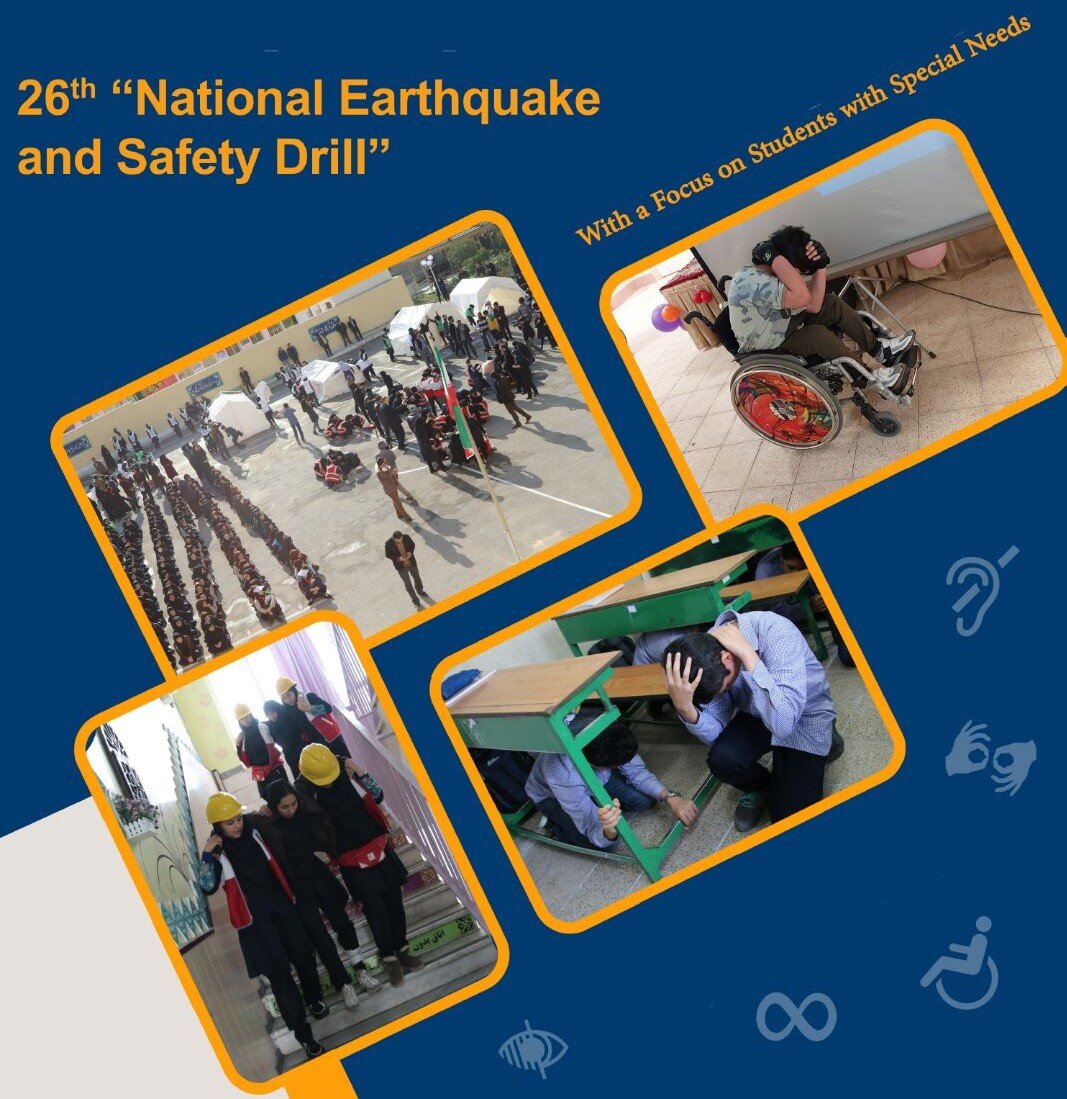Earthquake and safety drill to be held in schools
Earthquake and safety drill to be held in schools
TEHRAN –The 26th national earthquake and safety drill will be held on Wednesday in schools to raise students' preparedness and ensure their safety during earthquakes.

With a focus on students with special needs, the program also aims to teach students how to take proper actions in response to earthquakes in order to reduce casualties and damages in the aftermath of earthquakes, IRNA reported.
The International Institute of Earthquake Engineering and Seismology started organizing the drill nationwide 25 years ago. Since the Iranian year 1395 (2016-2017), the institute in cooperation with the Ministry of the Interior, the Ministry of Education, the Ministry of Science, Research and Technology, and the Iranian Red Crescent Society has conducted the drill across the country.
The current approach known as ‘safe school, resilient society’ provides the necessary training to the students, teachers, as well as residents of adjacent neighborhoods. It utilizes the capacity of the schools as a base for emergency preparedness and crisis management in the neighborhood.
This year the United Nations Children’s Fund (UNICEF), and the United Nations Educational, Scientific and Cultural Organization (UNESCO) will also cooperate to conduct the earthquake drill in schools.
Iran is highly susceptible to seismic events, with earthquakes occurring frequently and resulting in severe humanitarian crises.
The Iranian plateau is located in a very seismically active region of the world and is known not only for its major catastrophic earthquakes but also for the disasters relating to natural hazards, especially earthquakes.
About 2 percent of the earthquakes in the world occur in Iran but more than six percent of the victims of the world earthquakes during the 20th century are reported from Iranian earthquakes.
A total of 6,949 earthquakes were recorded across the country over the past calendar year (March 2023 –March 2024) according to the Seismological networks of the Institute of Geophysics of the University of Tehran.
Most of the earthquakes happened respectively in the north-eastern Khorasan Razavi, south-eastern Kerman, north-western West Azarbaijan, and eastern South Khorasan provinces, ISNA reported.
Statistically, 2,268 earthquakes were less than 2 on the Richter scale; 3,685 were between 2 and 3; 796 were between 3 and 4; 181 were between 4 and 5; 22 were between 5 and 6; and 5 were between 6 and 7.
MT/MG
source: tehrantimes.com